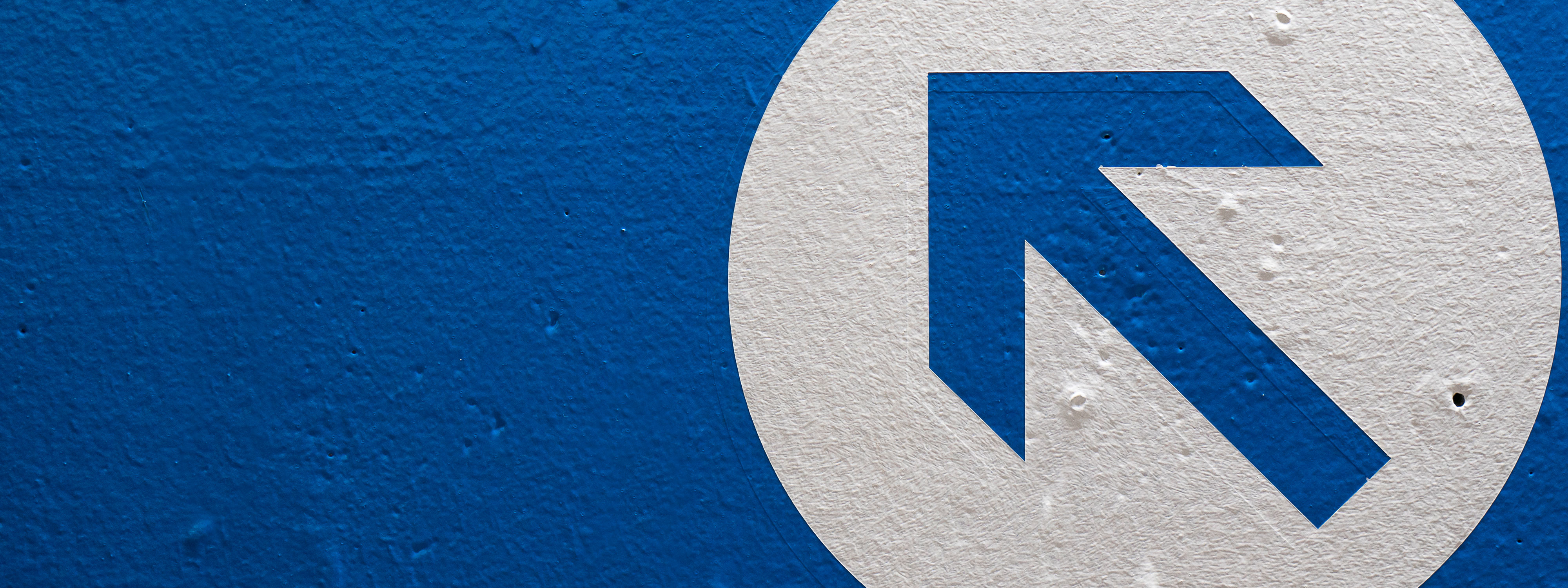
Information regarding the antidumping and countervailing duty petitions on Frozen Warmwater Shrimp from Ecuador, India, Indonesia, and Vietnam
15 min read
The Petition
On October 25, 2023, the American Shrimp Processors Association ("Petitioners") filed an antidumping duty ("ADD") petition on imports of frozen warmwater shrimp from Ecuador and Indonesia, and a countervailing duty ("CVD") petition against frozen warmwater shrimp from Ecuador, India, Indonesia, and Vietnam. The ADD petition alleges that imports of frozen warmwater shrimp from Ecuador and Indonesia are being sold in the United States at less than fair value (that is, "dumped"). The CVD petition alleges that the governments of Ecuador, India, Indonesia, and Vietnam are providing countervailable subsidies with respect to the production and export of frozen warmwater shrimp. Petitioners allege that the domestic industry has been materially injured and is threatened with further material injury because of the subject imports.
1. Petitioners have defined the products covered by the petitions as follows:
The merchandise subject to this investigation are certain frozen warmwater shrimp and prawns whether wild-caught (ocean harvested) or farm-raised (produced by aquaculture), head-on or head-off, shell-on or peeled, tail-on or tail-off, deveined or not deveined, cooked or raw, or otherwise processed in frozen form.
The frozen warmwater shrimp and prawn products included in the scope, regardless of definitions in the Harmonized Tariff Schedule of the United States (HTSUS), are products which are processed from warmwater shrimp and prawns through freezing and which are sold in any count size.
The products described above may be processed from any species of warmwater shrimp and prawns. Warmwater shrimp and prawns are generally classified in, but are not limited to, the Penaeidae family. Some examples of the farmed and wild-caught warmwater species include, but are not limited to, whiteleg shrimp (Penaeus vannemei), banana prawn (Penaeus merguiensis), fleshy prawn (Penaeus chinensis), giant river prawn (Macrobrachium rosenbergii), giant tiger prawn (Penaeus monodon), redspotted shrimp (Penaeus brasiliensis), southern brown shrimp (Penaeus subtilis), southern pink shrimp (Penaeus notialis), southern rough shrimp (Trachypenaeus curvirostris), southern white shrimp (Penaeus schmitti), blue shrimp (Penaeus stylirostris), western white shrimp (Penaeus occidentalis), and Indian white prawn (Penaeus indicus).
Frozen shrimp and prawns that are packed with marinade, spices or sauce are included in the scope. In addition, food preparations, which are not "prepared meals," that contain more than 20 percent by weight of shrimp or prawn are also included in the scope.
Excluded from the scope are: (1) breaded shrimp and prawns (HTSUS subheading 1605.20.10.20); (2) shrimp and prawns generally classified in the Pandalidae family and commonly referred to as coldwater shrimp, in any state of processing; (3) fresh shrimp and prawns whether shell-on or peeled (HTSUS subheadings 0306.36.0020 and 0306.36.0040); (4) shrimp and prawns in prepared meals (HTSUS subheading 1605.20.05.10); (5) dried shrimp and prawns; (6) canned warmwater shrimp and prawns (HTSUS subheading 1605.20.10.40); (7) certain dusted shrimp; and (8) certain battered shrimp. Dusted shrimp is a shrimp-based product: (1) that is produced from fresh (or thawed-from-frozen) and peeled shrimp; (2) to which a "dusting" layer of rice or wheat flour of at least 95 percent purity has been applied; (3) with the entire surface of the shrimp flesh thoroughly and evenly coated with the flour; (4) with the non-shrimp content of the end product constituting between four and 10 percent of the product’s total weight after being dusted, but prior to being frozen; and (5) that is subjected to IQF freezing immediately after application of the dusting layer. Battered shrimp is a shrimp-based product that, when dusted in accordance with the definition of dusting above, is coated with a wet viscous layer containing egg and/or milk, and par-fried.
The products covered by the scope are currently classified under the following HTSUS subheadings: 0306.17.0004, 0306.17.0005, 0306.17.0007, 0306.17.0008, 0306.17.0010, 0306.17.0011, 0306.17.0013, 0306.17.0014, 0306.17.0016, 0306.17.0017, 0306.17.0019, 0306.17.0020, 0306.17.0022, 0306.17.0023, 0306.17.0025, 0306.17.0026, 0306.17.0028, 0306.17.0029, 0306.17.0041, 0306.17.0042, 1605.21.1030, and 1605.29.1010. These HTSUS subheadings are provided for convenience and for customs purposes only and are not dispositive, but rather the written description of the scope is dispositive.
2. The petition lists the following quantities, values, and average unit values for the subject imports:
|
Quantity (Thousand LBs) |
|||||
| Country | 2020 |
2021 |
2022 | Jan-Jun 2022 | Jan-Jun 2023 |
|
India |
596,326 |
747,915 |
665,058 |
332,366 |
283,495 |
|
Ecuador |
266,283 | 391,524 | 421,824 | 216,225 | 211,137 |
|
Indonesia |
321,685 | 332,014 | 307,630 | 175,579 | 138,319 |
|
Vietnam |
119,149 | 161,721 | 112,878 | 59,532 | 35,252 |
|
Subtotal Subject |
1,303,442 | 1,633,174 | 1,507,391 | 783,702 | 668,203 |
|
All Other Sources |
211,597 |
182,066 |
164,092 |
86,654 |
58,199 |
|
Total |
1,515,039 | 1,815,240 | 1,671,483 | 870,357 | 726,402 |
|
Value (Landed, Duty-Paid Value, USD) |
|||||
| Country | 2020 |
2021 |
2022 | Jan-Jun 2022 | Jan-Jun 2023 |
|
India |
2,406,088,635 |
3,124,231,583 |
2,958,128,360 |
1,519,799,635 |
1,078,570,085 |
|
Ecuador |
774,730,608 | 1,361,585,190 | 1,499,695,864 | 786,559,941 | 674,120,753 |
|
Indonesia |
1,358,585,857 | 1,475,820,104 | 1,515,808,203 | 894,413,283 | 548,751,038 |
|
Vietnam |
615,023,083 | 894,877,351 | 686,916,481 | 359,868,069 | 191,730,145 |
|
Subtotal Subject |
5,154,428,183 | 6,856,514,228 | 6,660,548,908 | 3,560,640,928 | 2,493,172,021 |
|
All Other Sources |
1,014,305,416 |
955,364,523 |
960,438,652 |
524,600,487 |
343,382,674 |
|
Total |
6,168,733,599 | 7,811,878,751 | 7,620,987,560 | 4,085,241,415 | 2,836,554,695 |
|
AUV ($/LB) |
|||||
| Country | 2020 |
2021 |
2022 | Jan-Jun 2022 | Jan-Jun 2023 |
|
India |
$4.03 |
$4.18 |
$4.45 |
$4.57 |
$3.80 |
|
Ecuador |
$2.91 | $3.48 | $3.56 | $3.64 | $3.19 |
|
Indonesia |
$4.22 | $4.45 | $4.93 | $5.09 | $3.97 |
|
Vietnam |
$5.16 | $5.53 | $6.09 | $6.04 | $5.44 |
|
Subtotal Subject |
$3.95 | $4.20 | $4.42 | $4.54 | $3.73 |
|
All Other Sources |
$4.79 |
$5.25 |
$5.85 |
$6.05 |
$5.90 |
|
Total |
$4.07 | $4.30 | $4.56 | $4.69 | $3.90 |
Overview of ADD/CVD proceedings
There are two phases – preliminary and final – of ADD and CVD investigations. The Department of Commerce ("DOC") will determine whether imports of frozen warmwater shrimp from the targeted countries were dumped in the United States, and establish the antidumping duties that will be imposed. DOC will also determine whether the governments of Ecuador, India, Indonesia, and Vietnam subsidized exports of frozen warmwater shrimp to the United States. The International Trade Commission ("ITC") will determine whether imports of the subject merchandise are materially injuring, or threaten to materially injure, the domestic industry.
In order for final ADD and CVD to be imposed, both agencies must issue "affirmative" findings. We discuss below the steps involved in reaching such findings.
A. DOC Dumping Investigation
By November 14, 2023, DOC must decide whether the ADD petition contains the legally required information regarding Petitioners’ standing, dumping, and injury to warrant initiating an investigation. The standard for initiation is low, requiring only that the petition contains information that is "reasonably available" to Petitioners. Consequently, we expect DOC will initiate the investigation by the November 14 deadline.
DOC will issue an ADD questionnaire to, and calculate a dumping rate for, one or more producers in each of the targeted countries. These producers are referred to as "mandatory respondents." The decision of which producers will receive the questionnaire will be based on export volumes. DOC could choose only one producer from each targeted country to respond to the questionnaire if it is possible to account for 80%-85% of exports with just one producer. If not, DOC will choose two or more producers from each targeted country.
The companies that are selected as mandatory respondents will receive dumping rates based on their actual data. If a company refuses to respond to the questionnaire, it will be assigned a dumping rate based on "adverse facts available," which is a punitive rate, typically based on the dumping rate calculated in the petition. The dumping rates alleged in the ADD petition range from 1.29% to 111.39% for Ecuador and from 4.85% to 37.36% for Indonesia.
All other producers from each country (other than those that are issued the questionnaire) will be subject to each country’s "All Others" Rate, which normally is calculated as the weighted average of the rates assigned to the mandatory respondents in each country.
The ADD questionnaire will request detailed information regarding US sales and home-market sales of frozen warmwater shrimp (transaction-specific prices, direct selling expenses, movement expenses, etc.) and production costs during the period of investigation ("POI"), which will be the period of October 1, 2022, through September 30, 2023, for all targeted countries. DOC will also issue multiple supplemental questionnaires to clarify information reported in the initial responses. The burden of responding to the questionnaires is significantly increased if: (1) companies affiliated with the mandatory respondent also produce and/or sell the subject merchandise in the targeted countries; and/or (2) key materials used to produce the subject merchandise are purchased from affiliated suppliers.
Within 140 days after the ADD investigation is initiated (we estimate by April 2, 2024), DOC must make a preliminary ADD determination of whether dumping exists and, if so, the estimated dumping margin for each company investigated (DOC can, and often does, postpone the preliminary determination for an additional 50 days). If DOC makes an affirmative preliminary determination, Customs and Border Protection ("CBP") will suspend liquidation of entries of frozen warmwater shrimp from the targeted countries and require importers to provide ADD cash deposits equal to the preliminary dumping margin calculated for the exporter multiplied by the entered value of the merchandise. Normally, the suspension of liquidation begins on the date DOC’s preliminary determination is published in the Federal Register. However, if there are "critical circumstances," the suspension can apply retroactively to imports made 90 days before the preliminary determination is published.
DOC personnel normally visit the mandatory respondents’ offices to verify the accuracy of the information provided in the questionnaire responses. This is normally done after the preliminary determination. If the questionnaire responses are incomplete or their accuracy cannot be verified, DOC will calculate dumping margins based on "adverse facts available," which normally means accepting the dumping margins calculated by Petitioners. The verification is one of the most difficult aspects of the investigation.
To verify a respondent’s reported information, DOC will send a team of verifiers and require access to confidential information, including the mandatory respondents’ accounting records, sales and cost systems, and other sensitive information. In recent practice, due to the COVID-19 pandemic, DOC has first required companies to provide information related to safety and pandemic-related precautions. In the event that DOC determines that it cannot conduct an on-site, in-person verification due to travel or safety concerns, it may conduct a "virtual verification" through an online platform (e.g., Webex/Teams) as an alternative.
Within 75 days after the preliminary determination, DOC will issue a final ADD determination (as with the preliminary determination, DOC can, and often does, postpone this deadline for an additional 60 days). DOC’s final decision is based on the verified information, public hearings, and briefs submitted by counsel involved in the case. If a zero-dumping finding is made, or only "de minimis" levels (i.e., less than 2.00%) of dumping margin are found, the investigation ends. If DOC’s final ADD determination is affirmative, the case proceeds to ITC for a final injury determination. DOC will also instruct CBP to continue to suspend liquidation of entries of frozen warmwater shrimp from the targeted countries and require ADD cash deposits at the final dumping margins determined for each exporter. Individual companies receiving zero or de minimis rates are excluded from the ADD order (if issued).
B. DOC Subsidy Investigation
As with the dumping investigation, DOC must decide whether the CVD petition contains the legally required information regarding Petitioners’ standing, subsidies, and injury to warrant initiating an investigation by November 14, 2023.
DOC will then issue CVD questionnaires to the Ecuadorian, Indian, Indonesian, and Vietnamese companies selected for investigation, as well as to the governments of Ecuador, India, Indonesia, and Vietnam. Typically, DOC chooses the two or three largest foreign exporters from each country to respond to the questionnaire. Again, these are referred to as "mandatory respondents." The CVD questionnaire will seek information about the alleged subsidies for the POI (the most recently completed fiscal year – most likely calendar year 2022), as well as for prior years. DOC will likely issue one or more supplemental questionnaires seeking clarification or additional information.
Within 65 days after the CVD investigation is initiated (we estimate by January 18, 2024), DOC must make a preliminary CVD determination of whether subsidization exists and, if so, the estimated CVD rate for each company investigated (DOC can, and often does, postpone the preliminary determination for an additional 65 days). If DOC makes an affirmative preliminary determination, CBP will (as in the dumping investigation) suspend liquidation of entries of frozen warmwater shrimp from Ecuador, India, Indonesia, and Vietnam and require importers to provide cash deposits equal to the preliminary CVD rate calculated for the exporter multiplied by the entered value of the merchandise. Normally, the suspension of liquidation begins on the date DOC’s preliminary determination is published in the Federal Register. However, if there are "critical circumstances," the suspension can apply retroactively to imports made 90 days before the preliminary determination is published.
DOC personnel will visit the mandatory respondents’ offices to verify the accuracy of the information provided in the CVD questionnaire responses. DOC will also conduct on-site verifications of the information reported by the governments of Ecuador, India, Indonesia, and Vietnam. As in the dumping context above, DOC will first determine whether an on-site verification is feasible with respect to health and safety precautions and may conduct a "virtual verification" as an alternative to an on-site, in-person verification.
Within 75 days after the preliminary determination, DOC will issue a final CVD determination. DOC’s final decision is based on the verified information, public hearings, and briefs submitted by counsel involved in the case. If a zero-subsidy finding is made, or only "de minimis" levels of subsidies (i.e., less than 1.00%) are found, the investigation ends. If DOC’s final determination is affirmative, the case proceeds to ITC for a final injury determination. DOC will also instruct CBP to continue to suspend liquidation of entries of frozen warmwater shrimp from Ecuador, India, Indonesia, and Vietnam, and require CVD cash deposits at the final subsidy rates determined for each exporter. Individual companies receiving zero or de minimis subsidy rates are excluded from the CVD order (if issued).
C. ITC Injury Investigation
ITC is currently scheduled to make a preliminary determination (that is, the Commissioners will vote) no later than December 9, 2023. The ITC’s preliminary investigation will move very quickly. The legal standard that ITC must apply in reaching its preliminary determination is very low. Essentially, ITC must issue an affirmative preliminary injury determination unless it is clear that the US industry is not being injured or is not threatened with injury. Any doubt requires ITC to continue the investigation. Because this standard is so low, it is extremely difficult to terminate an investigation at the preliminary stage. In the final injury investigation, ITC has considerably more time to conduct its investigation and consider the facts and arguments presented by the parties. The legal standard is also higher in the final phase. Therefore, foreign producers are more likely to succeed at the final stage of ITC’s investigation than at the preliminary stage. Nevertheless, it can be advantageous for foreign producers and importers to participate in the preliminary phase of the investigation so they can frame themes and issues for ITC’s consideration in the final phase.
ITC will base its preliminary injury determination primarily on information received in responses to the questionnaires sent to US producers, US importers, and foreign producers. Typically, the ITC circulates these questionnaires to parties within two to three business days of the filing of the petition (i.e., on or around October 27 or 30, 2023); and sets the deadline for them a week before the Staff Conference, discussed below (i.e., on or around November 7, 2023). It is important that foreign producers timely submit responses. Otherwise, ITC likely will accept Petitioners’ allegations, resulting in an affirmative preliminary injury determination.
ITC Staff will conduct a conference on November 15, 2023. At the conference, interested parties will have an opportunity to present oral testimony and answer ITC Staff’s questions. Afterwards, parties will have an opportunity to present written arguments (and supporting exhibits) in post-conference briefs, which likely will be due on November 20, 2023.
In the final phase, the ITC conducts a more thorough investigation, with a much higher standard of injury. For the final phase, the ITC crafts more detailed questionnaires for issuance to US producers, US importers, and foreign producers, as well as (unlike in the preliminary phase) for issuance to US purchasers. Before issuing the questionnaires, ITC Staff circulates draft questionnaires for the parties’ comments, which is an important opportunity to ensure the questionnaires solicit information needed to support the defense. After issuing and receiving responses to the questionnaires, ITC Staff prepares a report summarizing and discussing the information and data reported in the questionnaire responses, as well as information compiled from the preliminary phase of the investigation and ITC Staff’s independent research. The ITC Staff report is important because it is a key document relied upon by the Commissioners in evaluating whether the US industry is materially injured or threatened with material injury because of the cumulated subject imports. After issuance of the ITC Staff report, parties have approximately one week to submit briefs ("prehearing briefs") presenting their arguments supporting or opposing an affirmative determination of material injury (or threat thereof). Normally one week after the deadline for prehearing briefs, ITC holds a public hearing at which the Commissioners (i.e., the decision makers) preside. During the hearing, both sides – Petitioners in support of ADD/CVD and the foreign producers and US importers/purchasers opposed to ADD/CVD – will each have one hour to make an affirmative presentation, followed by a question-and-answer session with the Commissioners. For the defense, in particular, it is critical that industry witnesses (such as importers and US purchasers) opposed to the imposition of ADD/CVD participate and testify at the ITC hearing. After the hearing, the parties have approximately one week to prepare "posthearing briefs", which typically focus on rebutting the other side’s arguments and answering specific questions raised by the Commissioners at the hearing. Several days before the date of the ITC’s scheduled vote, parties have one last opportunity to submit final comments in the case. Unlike the preliminary phase, which takes place over the course of approximately six weeks, the final phase normally takes place over the course of approximately four months.
Calendar of proceedings
The table below provides key deadlines* for the DOC and ITC ADD proceedings. These dates assume full extensions of the statutory deadlines and "alignment" of the final ADD and CVD determinations.
| ITC Issues Foreign Producer, US Importer, and US Producer Questionnaires |
October 27 or 30, 2023 |
| Foreign Producer, US Importer, and US Producer Questionnaires Due |
November 7, 2023 |
|
DOC Initiation |
November 14, 2023 |
|
ITC Preliminary Conference |
November 15, 2023 |
|
ITC Post-Conference Briefs |
November 20, 2023 |
|
ITC Preliminary Determination |
December 9, 2023 |
|
DOC Issues CVD Questionnaire |
December 14, 2023 |
|
DOC Issues ADD Questionnaire |
December 19, 2023 |
|
DOC ADD Questionnaire Response Due |
January 9, 2024 |
|
DOC CVD Questionnaire Response Due |
January 13, 2024 |
|
Supplemental ADD and CVD Questionnaire Responses |
Winter/Spring 2024 |
|
DOC Preliminary CVD Determination |
March 23, 2024 |
|
Verification |
Spring/Summer 2024 |
|
DOC Preliminary ADD Determination |
May 22, 2024 |
|
DOC Final ADD and CVD Determination |
September 4, 2024 |
|
ITC Final Determination |
October 19, 2024 |
|
Order Issued |
October 26, 2024 |
* Please note dates are approximate. To the extent a deadline falls on a weekend or holiday, the event will usually occur the preceding or next business day.
White & Case means the international legal practice comprising White & Case LLP, a New York State registered limited liability partnership, White & Case LLP, a limited liability partnership incorporated under English law and all other affiliated partnerships, companies and entities.
This article is prepared for the general information of interested persons. It is not, and does not attempt to be, comprehensive in nature. Due to the general nature of its content, it should not be regarded as legal advice.
© 2023 White & Case LLP



